Charles Lachaux of Vosne-Romanée’s Domaine Arnoux-Lachaux is continuing to develop his viticulture.
I have followed Lachaux’s Nuits-Saint-Georges vineyard Les Procès throughout the year since 2021, watching its development and his viticultural techniques as we move towards each new vintage.
Now we’re looking at the winter/spring pruning.
March 2024
Nuits-Saint-Georges Les Procès
NSG Les Procès is a 1er cru located above the village of Nuits, just below the beautiful Chateau Gris.
The Arnoux-Lachaux plot is 0.6337 hectare, and the vines are on average 65-70 years old.
I visit the vineyard almost weekly, as it is a beautiful walk from my place in Nuits-Saint-Georges. This gives me the chance to follow its progress.
The late pruning
After the terrible spring frosts in 2016 and 2021, vignerons have been looking at a way to minimize potential frost damage.
One is the traditional “taille tardive,” meaning late pruning. Best practice is to start pruning in early March, following the old Burgundian maxim: “Taille tot, taille tard, rien ne vaut la taille de mars” (Prune early or prune late, nothing’s as good as pruning in March).
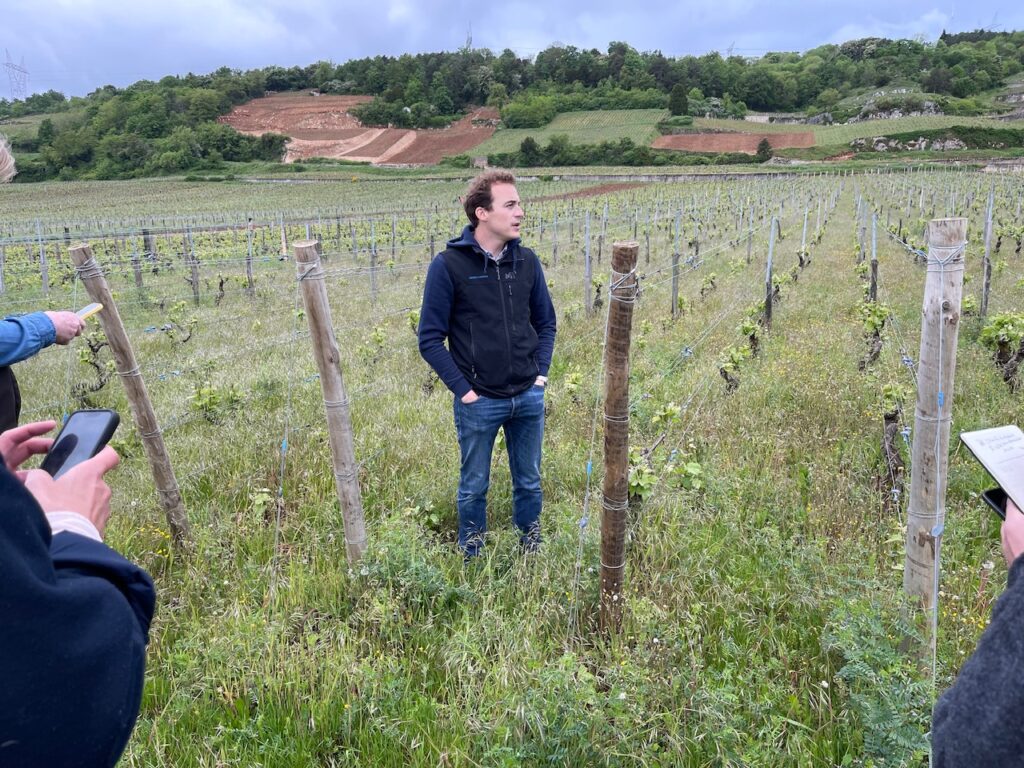
This later pruning has some disadvantages as, depending on how many hectares there are to prune, time can be an issue for getting it all done before bud break.
The theoretical best is to prune as soon as the sap starts to rise as spring approaches, in late February to early March. But then the vignerons need to get on with it quickly, because the vines direct energy to every bud – including those that will eventually be pruned off.
The more buds the vines nurture, the longer it takes them to recover after pruning, and it becomes increasingly taxing for the vines the later in the season it is. If the vigneron waits so long that buds start to break, vines will being to lose vigour. Experiments carried out have discovered that pruning too late can even compromise fruit set.
Two-step pruning
Two-step pruning is an effective compromise, with the first pruning pass in January. During this stage, all unusable wood is removed, and those that will serve as the next year’s fruiting canes are left long and mostly untrimmed. This pass reduces the number of buds while the vine is still largely dormant, hence diminishing the eventual reduction of vigour later in the spring.
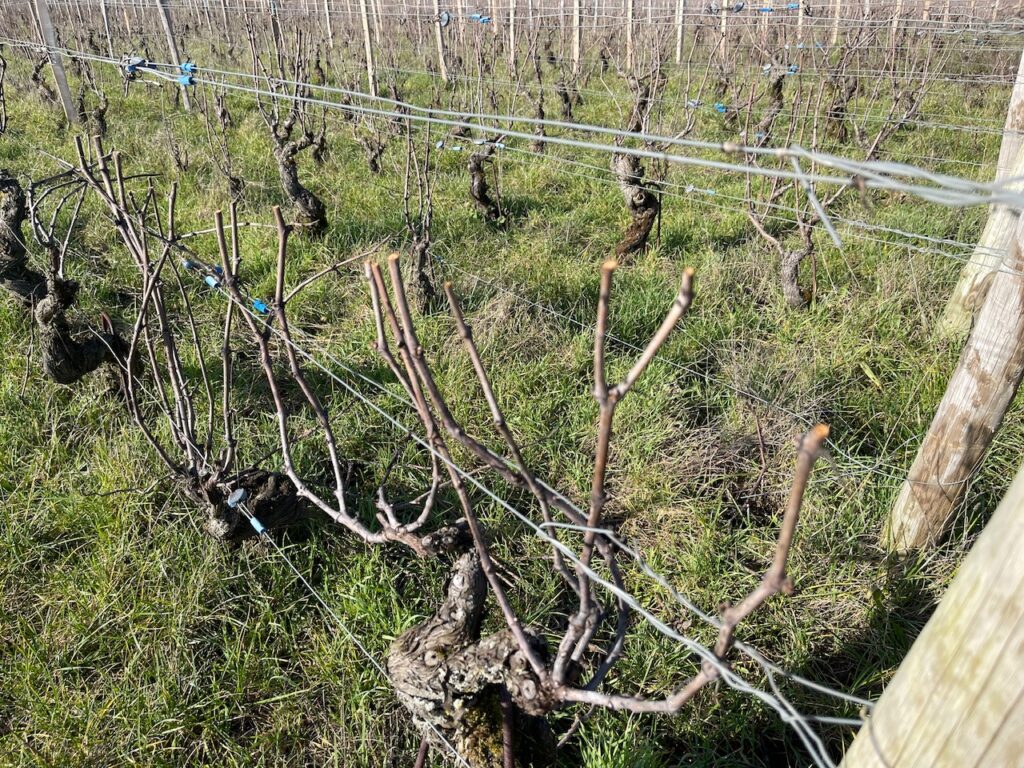
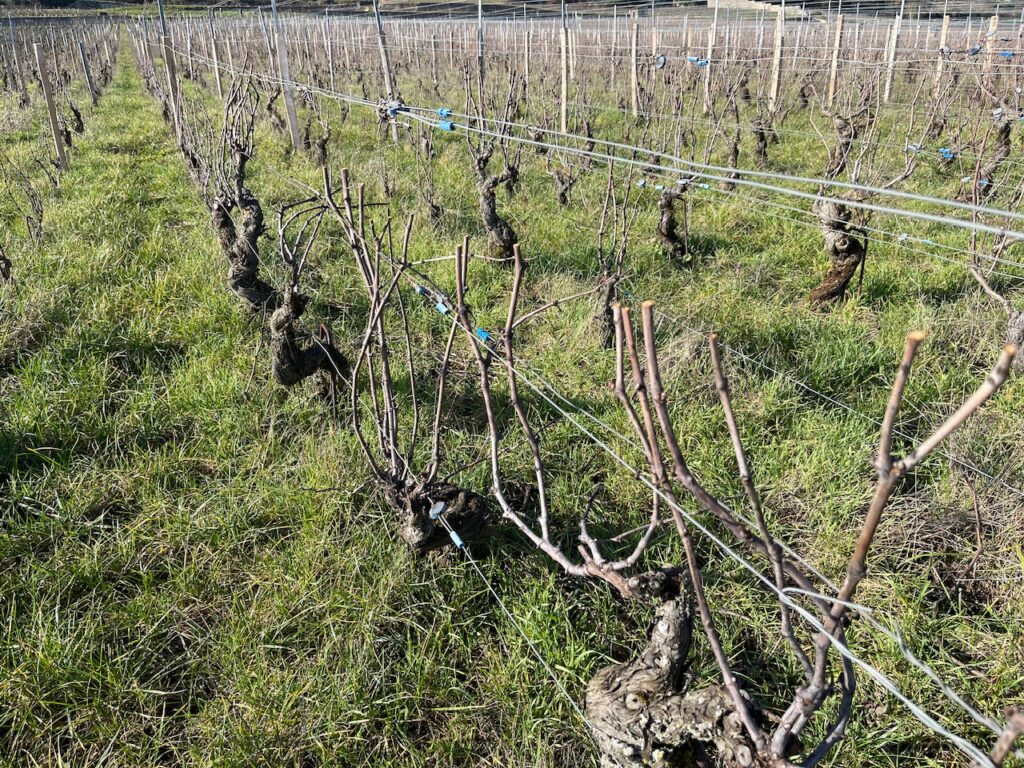
The second – final – pruning is then done late, in this case, early March. This ensures that the vines are not yet pushing fully forward, as the pruning will slow the development of the bud and canes a bit. This definitive pruning is relatively quick, as it’s “just” adjusting the number of remaining buds to achieve the desired yield.
This also diminishes the risk of serious frost damage, as the vines are slowed in their development by the two-step pruning. Yet they are ready for the new season when the sap starts flowing.
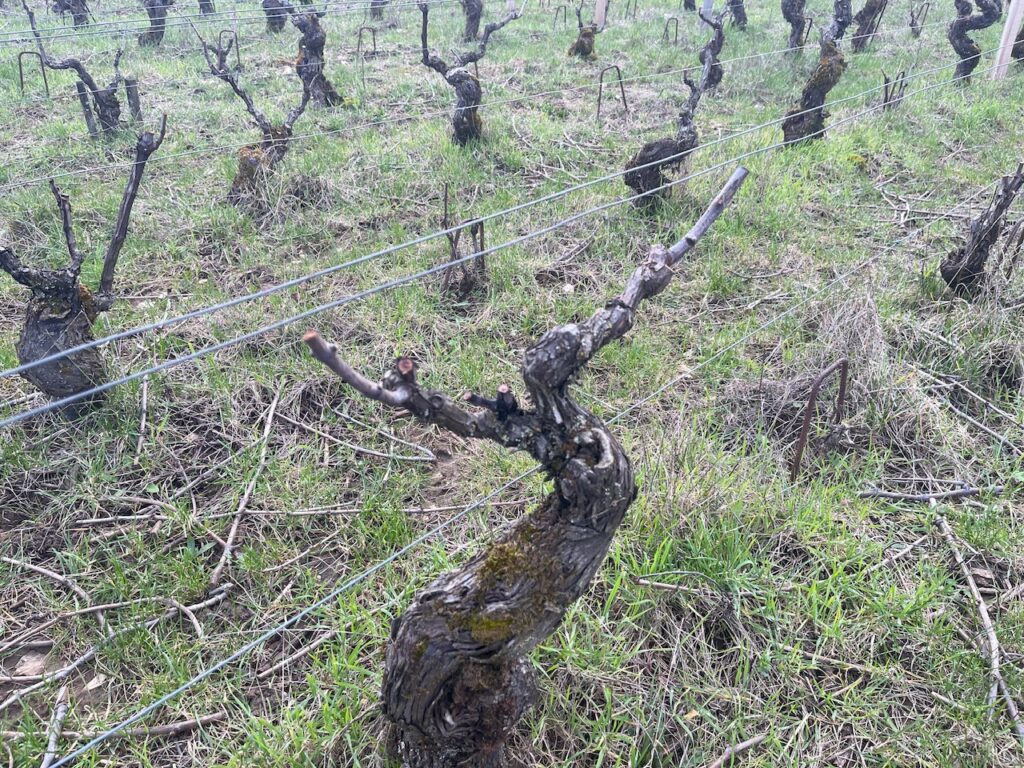
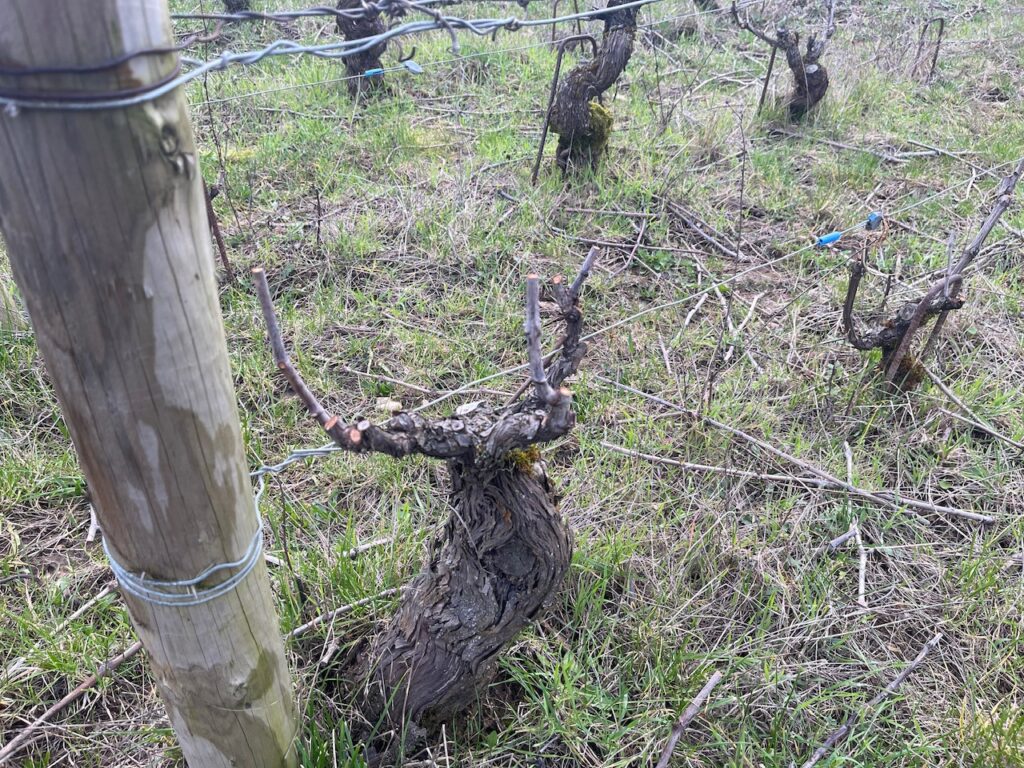
(Note: Thanks to Chantereves – Tomoko and Guillaume – for the inspirational Instagram posts on pruning from 2023. I borrowed a few of them as illustrations of this article. Thanks again.)

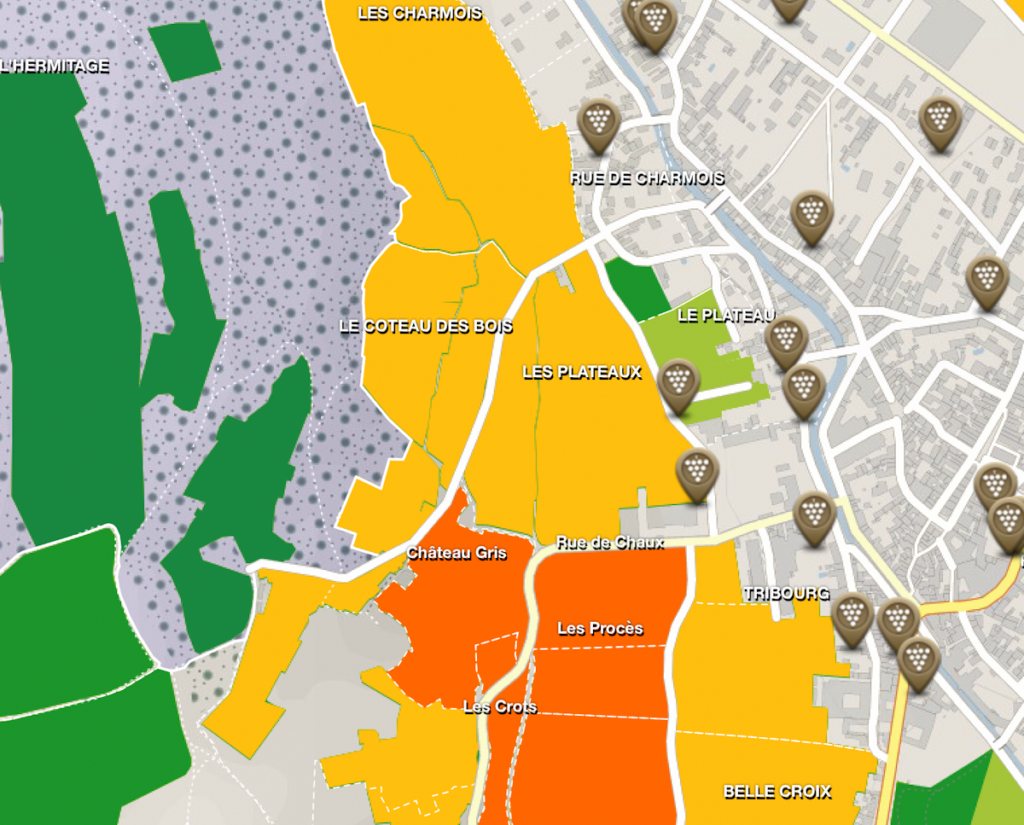

 - A true vin d’émotion – a Burgundy of passion
- A true vin d’émotion – a Burgundy of passion - A truly hedonistic wine – lively and enjoyable
- A truly hedonistic wine – lively and enjoyable - A vivacious wine for pure indulgance
- A vivacious wine for pure indulgance - A potential vin d´émotion - frais et léger
- A potential vin d´émotion - frais et léger